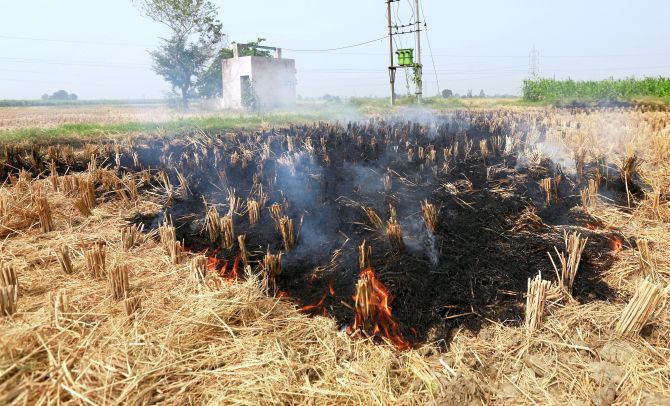Delhi’s air quality remained ‘very poor’ for the fourth day on Saturday with eight areas of the national capital recording severe pollution levels, as authorities warned the situation may deteriorate further next week due to localised emissions during festival and stubble burning.

The Central Pollution Control Board recorded the overall Air Quality Index of Delhi at 350. The highest AQI of this season was recorded Friday at 361.
In the National Capital region, Ghaziabad recorded severe pollution level, while Gurgaon, Faridabad, Noida and Greater Noida all recorded ‘very poor’ air quality, according to data by the Central Pollution Control Board data on Saturday.
The eight areas that recorded ‘severe’ air quality Saturday are Anand Vihar, Dwarka Sector 8, Narela, Punjabi Bagh, Bawana, Mundaka, Vivek Vihar and Rohini.
An AQI between 0 and 50 is considered ‘good’, 51 and 100 ‘satisfactory’, 101 and 200 ‘moderate’, 201 and 300 ‘poor’, 301 and 400 ‘very poor’, and 401 and 500 ‘severe’.

The CPCB-led task force has recommended stringent measures from November 1 to 10, forecasting further deterioration in the air quality ahead of Diwali.
Some of these recommendations include shut down of coal and biomass factories, intensification of inspection by transport department to check polluting vehicles and control traffic congestion in Delhi NCR during November 1-10.
Authorities also issued an advisory to public, asking them to avoid outdoor strenuous activities and minimise the use of private vehicles.

The task force also warned that at the beginning of November, the situation may get further deteriorated on account of localised emissions during festival and regional contribution due to stubble burning.
The PM2.5 (presence of particles in the air with a diameter of less than 2.5 micrometres) was recorded at 179. The PM2.5, also called “fine particulates,” can be a matter of more serious health concern than PM10.
The PM10 level (presence of particles in the air with a diameter of less than 10 micrometres) in Delhi stood at 321, according to the data from the SAFAR.

The SAFAR also issued a heath advisory due to increased pollution level in Delhi, urging people with heart or lung disease, older adults and children to avoid prolonged or heavy exertion.
It also recommended people to go for shorter walks instead of jogs, keeping windows closed and wearing masks while stepping outside.











 © 2025
© 2025